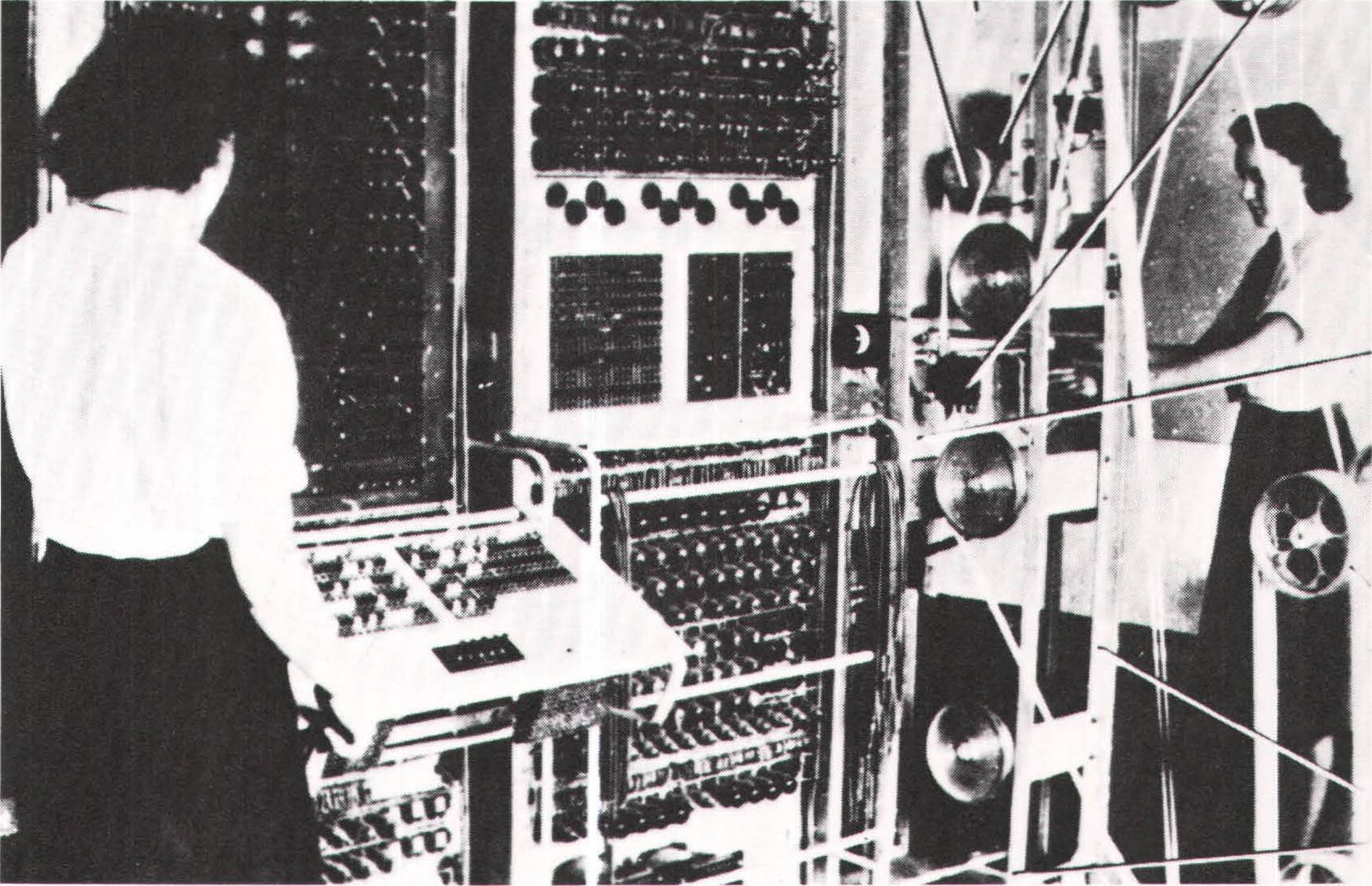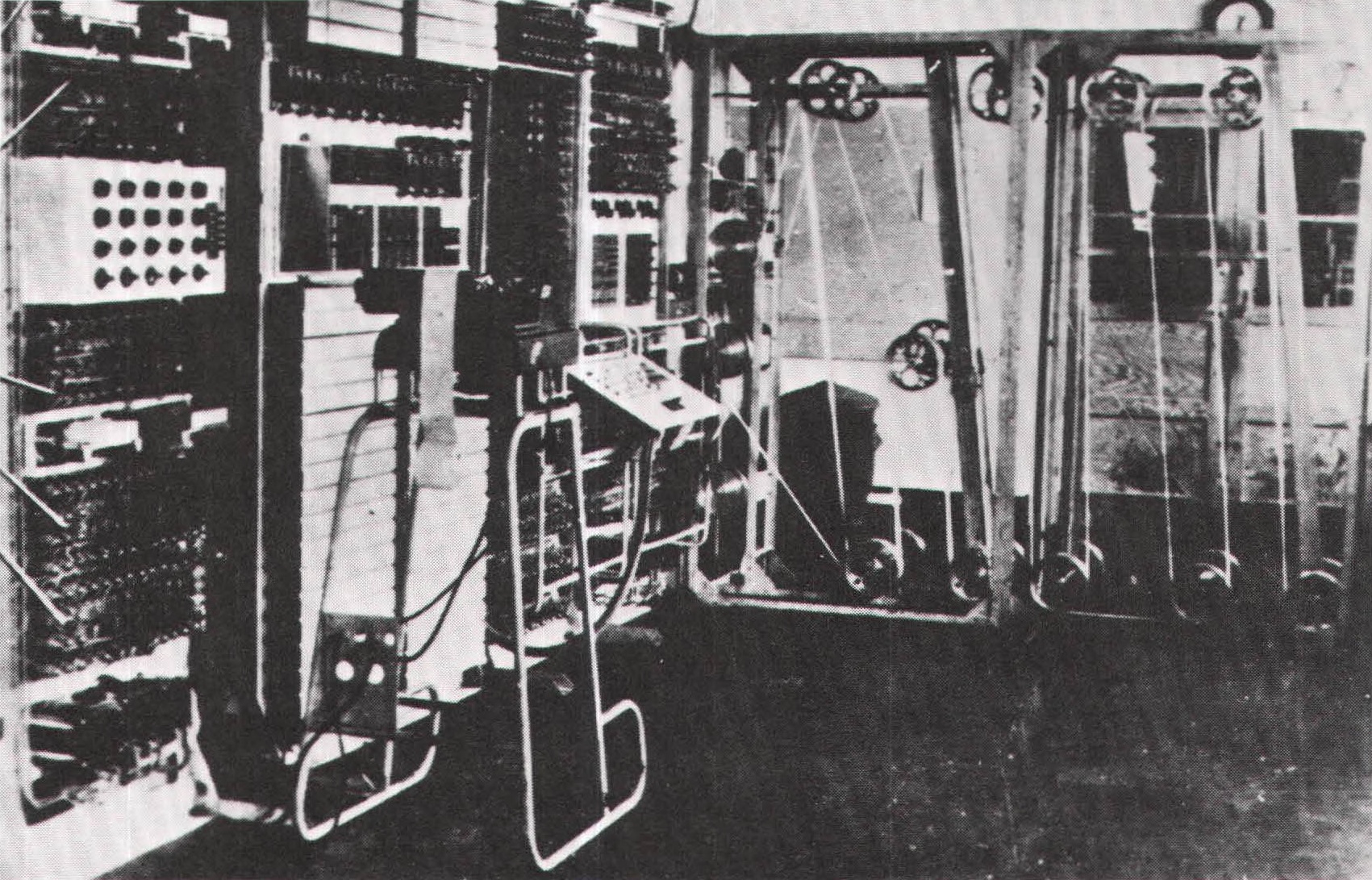Turing was a very peculiar man, an unappealing mixture of boy genius and absent-minded professor. He was a gruff, gauche individual, with little concern for appearances. He usually looked as though he had just gotten out of bed, with a permanent five o’clock shadow (the sight of blood made him faint, so he rarely shaved), uncombed hair, and unkempt fingernails. He held up his pants with ties instead of belts and all his clothes looked as though they came from thrift shops or rummage sales. He had a high, stammering voice and a crowing, nervous laugh, and sometimes made odd squealing sounds when lost in thought, his mind almost visibly working away. Deadly serious about his work, he tended to ignore people who weren’t his intellectual equals; needless to say, he had very few friends. Furthermore, he was a homosexual in a country that considered homosexuality a crime; in 1954, after suffering a trial for “gross indecency,” Turing apparently committed suicide.
During the war, however, he was one of Britain’s most important cryptanalysts. Stationed at Bletchley Park, a secret installation about fifty miles north of London, Turing supervised the effort to decode German naval messages. German military communications depended upon an electromechanical teleprinter, known as the Enigma that coded and decoded messages by means of four randomly spinning rotors; you set the printer to a certain key, plugged in some electrical cords, typed in the message, and Enigma automatically scrambled and transmitted it. At the other end, another Enigma, set to the same key and plug patterns, automatically decoded it. With trillions of possible permutations, Enigma was a devilishly clever gadget, and the Germans had an unquestioning faith in the inviolability of their communications. (Whenever the British inexplicably stole a beat on them, the Germans invariably blamed it on traitors or spies but never on Enigma.) But, in part through Turing’s work, the British cracked Enigma and read German messages throughout the war.

To decipher the thousands of messages picked up every day, the analysts at Bletchley Park developed an electronic decoder called Colossus. Ten versions of Colossus were built altogether; the first was in operation by December 1943 – about two years ahead of ENIAC. A Colossus contained about 2,400 tubes, and consisted of four tall electronic panels and five optical punched-tape readers; a loop of tape punched with an assortment of messages was placed in a reader, and Colossus ran through the tape again and again, comparing the messages with known Enigma codes, until it came up with a match. Then it printed out the results. Colossus was neither a calculator nor a computer, although it could perform some calculator- or computer-like operations, and it never occurred to the scientists at Bletchley Park to make a stored-program computer. Colossus’s most noteworthy feature was its speed; it could process a single tape at a rate of 5,000 characters a second, and since each machine had five processors, it could handle a phenomenal 25,000 characters a second. (Colossus was not a Turing Machine, despite its scanners, and Turing had little to do with its development.)

As the war drew to a close, the United States invited British scientists to see ENIAC and the Harvard Mark I. J. R. Womersley, an official of the National Physical Laboratory, Britain’s biggest research agency, was the first man sent over. He arrived in March – about half a year before ENIAC’s completion. The Moore School briefed him and gave him a copy of von Neumann’s “Report on the EDVAC,” which he was allowed to take back to England. A mathematician who had worked on a differential analyzer (Britain had two analyzers, one at Manchester University and the other at Cambridge) and had read “Computable Numbers,” Womersley was quite impressed by ENIAC. Back in England, he immediately set out to organize a computing project. And within a few years, Britain, which had an abundance of technical and theoretical know-how in men like Turing and the Colossus engineers, outpaced the Americans.